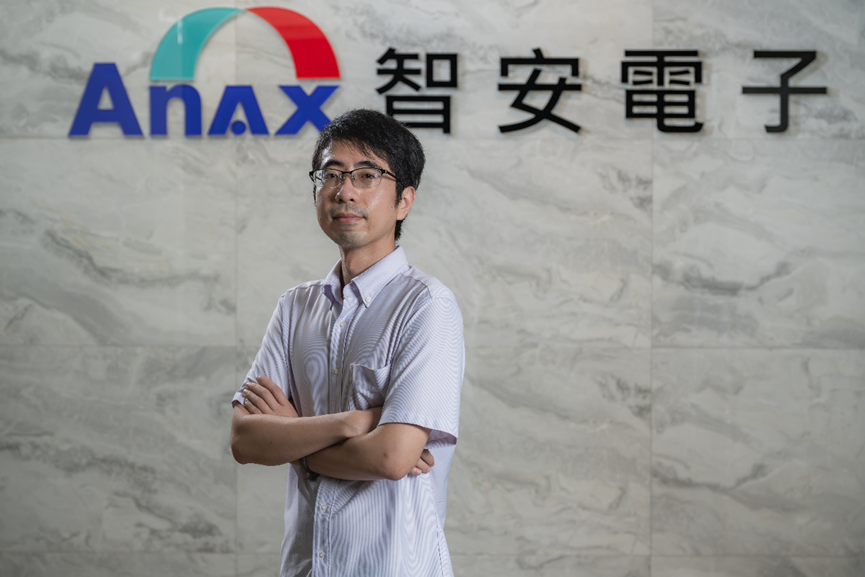
(source: Shutterstock)
As Mini LED technology has matured over recent years, it has gradually gained market share in high-end TVs and monitors, with the industry maintaining an optimistic outlook for its future. Market intelligence firm TrendForce forecasts that Mini LED TVs will exhibit impressive market performance, with shipment volumes expected to grow significantly by 55% this year. Another research firm believes that, for the first time, shipments of Mini LED products will surpass those of OLED products within the TV display panel market.
Jim Lin, the R&D Manager at the Mini LED Business Center of Anax Technology Corporation, a LED driver IC design service company, pointed out that the advantages of Mini LED technology lie in its high brightness and high contrast, making it suitable for high-end TVs and monitors. When it comes to automotive display panels, which involve outdoor environments and require durability and reliability, Mini LED displays also outperform OLED under the same conditions. However, OLED still has an edge in small to medium-sized display applications.
In the past, Anax introduced the PM-Gen1 and PM-Gen2 solutions for driver ICs used in Mini LED backlight modules. In response to clients’ needs, the company has continuously improved its technology and recently launched a new generation solution named AM-Gen3. This new solution helps branded electronics manufacturers reduce costs and expand the market share of Mini LED panels.
Anax’s AM-Gen3 Architecture Has Been Adopted by Brands Including Hisense and Xiaomi
Jim explained that in the past, a single driver IC controlled dimming regions consisting of 100 or 200 zones, necessitating an increase in the size of the IC. As panel sizes grew, the number of dimming zones rose to 1,000 or even 2,000, leading to a corresponding increase in the number of ICs. Consequently, the development of driver ICs involved higher costs and more complex wiring layouts. To address this, Anax Technology has shifted from a passive matrix (PM) driver to an active matrix (AM) driver for its solutions. Unlike the traditional PM technology, where the IC was placed on the control board, the AM-Gen3 architecture places the IC entirely on the light source (or the source board). This significantly reduces the size of the control board and simplifies the design of the light board and wiring. Additionally, it lowers both power consumption and costs, aligning with clients’ ESG requirements.
However, maintaining the size and thickness of the IC while also ensuring the best optical performance of the LED is quite challenging. Jim admitted, “At the beginning, no manufacturer was working on this kind of architecture, so we could only collaborate step by step with display panel manufacturers and together discuss how to develop this architecture for driver ICs.” Additionally, there were inter-component communication issues with the IC design. To address this, Anax developed a special transmission interface that can maintain the stability and speed of the LED backlight module even with a large amount of data. This interface can meet the demands of regular gaming monitors at refresh rates of 144Hz, 240Hz, and even 480Hz. Even if there is a demand for refresh rates as high as 960Hz in the future, the solution will still be able to meet these requirements, ensuring zero-latency high-speed transmission and further enhancing the user experience.
“Compared with previous generations, the AM-Gen3 significantly reduces power and energy consumption,” stated Jim. “It also utilizes Hybrid Dimming technology, which maximizes and optimizes light quality, brightness, and contrast. This enhancement allows consumers to notice more pronounced differences between ‘darker blacks’ and ‘whiter whites’ in the display. Additionally, AM-Gen3 achieves zero screen latency and implements dynamic ghosting elimination technology.”
Jim further pointed out that, currently, AM-Gen3 can be used not only with PCB substrates but also with smaller-scale glass substrates. Electronics brands can plan their products based on this architecture and cost considerations. Indeed, numerous brands are eagerly adopting this solution.

Jim Lin, R&D Manager at Anax’s Mini LED Business Center, stated that the AM-Gen3 solution significantly reduces power and energy consumption compared with previous generations. This solution has been adopted by TV brands such as Hisense and Xiaomi.
Mini LED to Continue Expanding in Market Share among TVs and Monitors
When talked about the subsequent market for Mini LED, Jim commented that no one had imagined the future of Mini LED before the architecture of Mini LED was constructed. This particular monitor technology was only sitting on a penetration rate of 4% in the beginning, which was subverted in 2020, followed by ramp ups among actual applications, when Anax released the AM Gen 3 architecture in 2020 after constant involvement in development and preliminary architectural designs since 2018. Mini LED has risen from 7% to 10% in global penetration among TVs and monitors, and remains on the ascending trajectory, with market share expediting after engagement from additional suppliers that would lower corresponding cost.
Jim is optimistic towards the industry, and commented that Mini LED is now experiencing a swift incorporation in the Chinese market under constantly ascending shipment, while the progress has been comparatively slow in Taiwan, though he believes that prices will continue to drop in the next 2-3 years to the level acceptable to consumers. Additionally, Sony’s Latest BRAVIA Mini LED TVs are undoubtedly an anchor to the Mini LED industry, which indicates that major brands are also seeing the potential of Mini LED being a display technology. Mini LED, despite potential competitions from OLED among medium and small-sized panels, remains locked in on advantages and clients in large-sized panels and specific fields, especially with how the eSports area has been increasing in demand for high-end Mini LED MNT/TVs under high computing from requirements of brightness and contrast, zero latency, and overall performance in power consumption (ESG). Mini LED is thus currently the optimal option for display technology due to aforementioned factors.
As end products of Mini LED gradually become affordable, TrendForce is projecting Mini LED TVs to continue to grow in shipment that could potentially arrive at 6.21 million units at a YoY growth of 53.5% by 2024, followed by a surge to 24.4 million units in 2027 at an approximate occupancy of 12.1% within the overall TV market. Mini LED monitors are likely to enter an explosive period between 2026 and 2027, with market penetration elevating significantly until 2027.
Anax Now in Talks with Suppliers for Next-Gen Display Technology Micro LED
Mini LED triumphs OLED in terms of high brightness, contrast, and reliability. Anax will carry on with its innovation of technology, and continue to optimize in region controls, color accuracy, and dynamic range, due to amplified difficulties and longer transmission for regional control.
Aside from TVs and monitors, Jim is also looking forward to seeing Mini LED being applied on eSports displays, drawing displays, automotive displays, medical displays, and industrial equipment in the future. “The indication of colors is essential to doctors’ interpretation regardless of X-ray or CT monitors, while automotive and industrial equipment displays would require a higher brightness and reliability as they are being used in outdoor environments, where proneness to burn-ins and shorter lifespan of OLED would remain areas that favor Mini LED in the future”, said Jim.
Jim believes that Micro LED will require a longer period of time before achieving popularization in the public, with IC serving as a key segment in technical advancement, since Mini LED is still at the fermentation phase for the time being. Anax has also been deploying in business opportunities of Micro LED aggressively by having negotiated with certain suppliers, and will be conducting plans and developing designs for next-gen technology.

Anax deploys heavily in business opportunities for Micro LED, with plans and development designs on next-gen technology also happening in the future.














